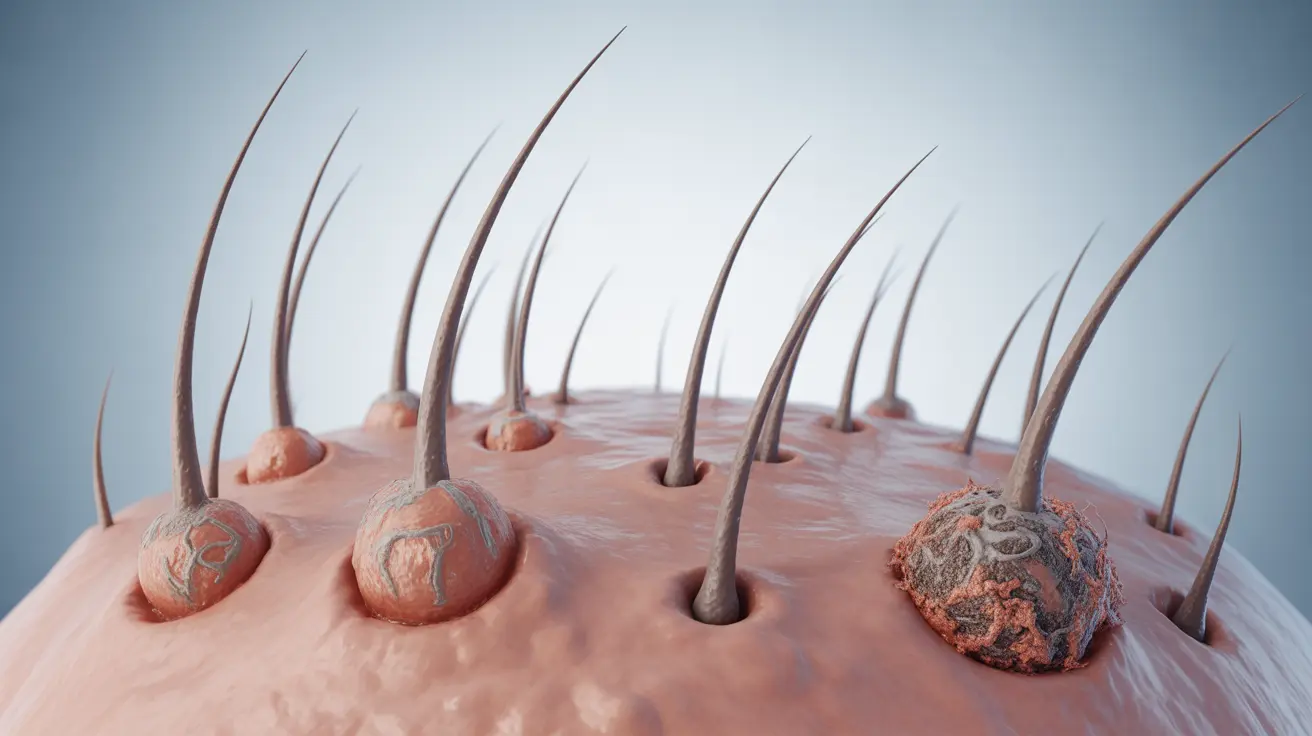The use of Monistat, an antifungal cream traditionally used for treating vaginal yeast infections, has gained attention as a potential solution for hair growth. While some people claim success with this off-label use, it's essential to understand the science, safety considerations, and available evidence before considering this treatment method.
In this comprehensive guide, we'll explore what research says about using Monistat for hair growth, potential risks and benefits, and how it compares to proven hair growth treatments.
Understanding the Monistat Hair Growth Theory
Monistat's active ingredient, miconazole nitrate, is primarily designed to combat fungal infections. Some proponents suggest that its ability to improve scalp health and reduce fungal issues might contribute to better hair growth conditions. However, it's important to note that this use is not FDA-approved or officially supported by clinical research.
How Monistat Might Affect Hair Growth
Potential Mechanisms
The theory behind using Monistat for hair growth centers on several possible mechanisms:
- Reducing fungal growth on the scalp
- Improving overall scalp health
- Potentially blocking DHT (dihydrotestosterone)
- Creating a healthier environment for hair follicles
Scientific Evidence
While anecdotal reports exist, scientific evidence supporting Monistat's effectiveness for hair growth remains limited. No controlled clinical trials have specifically studied miconazole nitrate's impact on hair growth patterns or its long-term safety for this purpose.
Safety Considerations and Risks
Using Monistat on the scalp comes with several potential risks and considerations:
- Scalp irritation
- Allergic reactions
- Chemical burns
- Increased sensitivity
- Unexpected hair problems
The cream's formula is specifically designed for vaginal use, not scalp application, which raises concerns about its safety and appropriateness for hair care purposes.
Proven Alternative Treatments
Instead of experimenting with Monistat, consider these scientifically-backed hair growth treatments:
- Minoxidil (FDA-approved for hair growth)
- Prescription medications like finasteride
- Scalp-specific antifungal treatments
- Hair growth supplements with proven ingredients
- Professional treatments and procedures
Frequently Asked Questions
Does Monistat cream help with hair growth or treating hair loss?
While some users report positive results, there is no scientific evidence proving Monistat's effectiveness for hair growth. The cream is not FDA-approved for this purpose, and its benefits for hair growth remain unproven in clinical studies.
How should I use Monistat on my scalp safely for hair growth?
If you choose to try Monistat for hair growth despite the risks, it's crucial to dilute the cream and perform a patch test first. However, healthcare professionals generally advise against this off-label use due to potential risks and the availability of proven alternatives.
What are the possible side effects of applying Monistat to the scalp?
Common side effects may include scalp irritation, burning sensation, redness, itching, and allergic reactions. Some users have reported chemical burns and increased scalp sensitivity. Long-term effects of this off-label use are unknown.
Can Monistat improve scalp health to reduce hair shedding caused by fungus?
While Monistat can treat fungal infections, there are specific antifungal medications designed for scalp use that are safer and more appropriate. Consult a dermatologist for proper diagnosis and treatment of scalp fungal issues.
Are there proven treatments that are more effective than Monistat for hair regrowth?
Yes, FDA-approved treatments like minoxidil and finasteride have proven effectiveness for hair regrowth. These treatments have undergone extensive clinical testing and are specifically designed for hair loss treatment, making them safer and more reliable options.




